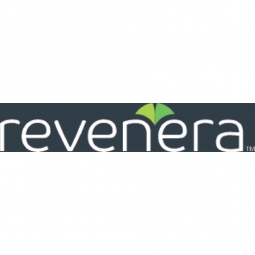下载PDF
F9’s New License Model: A Cloud-Based Transformation
技术
- 功能应用 - 企业资源规划系统 (ERP)
- 平台即服务 (PaaS) - 应用开发平台
适用行业
- 零售
适用功能
- 采购
用例
- 库存管理
- 基于使用的保险
服务
- 云规划/设计/实施服务
挑战
F9 是 Infor 的一个独立业务部门,提供全面的财务报告和分析。
F9 受到传统许可解决方案的限制,该解决方案没有随着他们的需求而发展,也没有提供他们想要的客户体验。着眼于未来,他们确定需要基于关键业务驱动因素的新解决方案:
- 新的货币化和部署模型。越来越多的 F9 ERP 解决方案已迁移到 SaaS。
- 客户增长。需要能够在其下一个主要版本中提供新的定价和功能,从而使 F9 能够加强其竞争地位。
- 更好的能见度。 F9 需要清楚地了解谁在购买、激活和重新激活许可证,这是在他们的旧解决方案中难以实施的功能。
- 改善客户体验。需要一个可靠且用户友好的客户门户来允许自我激活并减少与许可证相关的支持问题。
客户
信息
关于客户
Infor是商业云软件领域的全球企业领导者,也是超过 68,000 家企业和 SMB 公司的战略技术合作伙伴。
解决方案
F9 和 Revenera 的工程团队密切合作,快速实施了 Revenera 的软件货币化解决方案,包括权利管理和软件许可。 F9 的新货币化系统通过让客户控制他们的许可活动来帮助他们。
客户可以快速从试用版转向付费许可证,甚至可以根据需要停用和重新激活。 F9 及其 ERP 合作伙伴现在可以更详细地了解这些活动,而不是使用他们的旧解决方案。
图片
运营影响
数量效益
相关案例.

Case Study
Improving Production Line Efficiency with Ethernet Micro RTU Controller
Moxa was asked to provide a connectivity solution for one of the world's leading cosmetics companies. This multinational corporation, with retail presence in 130 countries, 23 global braches, and over 66,000 employees, sought to improve the efficiency of their production process by migrating from manual monitoring to an automatic productivity monitoring system. The production line was being monitored by ABB Real-TPI, a factory information system that offers data collection and analysis to improve plant efficiency. Due to software limitations, the customer needed an OPC server and a corresponding I/O solution to collect data from additional sensor devices for the Real-TPI system. The goal is to enable the factory information system to more thoroughly collect data from every corner of the production line. This will improve its ability to measure Overall Equipment Effectiveness (OEE) and translate into increased production efficiencies. System Requirements • Instant status updates while still consuming minimal bandwidth to relieve strain on limited factory networks • Interoperable with ABB Real-TPI • Small form factor appropriate for deployment where space is scarce • Remote software management and configuration to simplify operations

Case Study
How Sirqul’s IoT Platform is Crafting Carrefour’s New In-Store Experiences
Carrefour Taiwan’s goal is to be completely digital by end of 2018. Out-dated manual methods for analysis and assumptions limited Carrefour’s ability to change the customer experience and were void of real-time decision-making capabilities. Rather than relying solely on sales data, assumptions, and disparate systems, Carrefour Taiwan’s CEO led an initiative to find a connected IoT solution that could give the team the ability to make real-time changes and more informed decisions. Prior to implementing, Carrefour struggled to address their conversion rates and did not have the proper insights into the customer decision-making process nor how to make an immediate impact without losing customer confidence.

Case Study
Digital Retail Security Solutions
Sennco wanted to help its retail customers increase sales and profits by developing an innovative alarm system as opposed to conventional connected alarms that are permanently tethered to display products. These traditional security systems were cumbersome and intrusive to the customer shopping experience. Additionally, they provided no useful data or analytics.

Case Study
Ensures Cold Milk in Your Supermarket
As of 2014, AK-Centralen has over 1,500 Danish supermarkets equipped, and utilizes 16 operators, and is open 24 hours a day, 365 days a year. AK-Centralen needed the ability to monitor the cooling alarms from around the country, 24 hours a day, 365 days a year. Each and every time the door to a milk cooler or a freezer does not close properly, an alarm goes off on a computer screen in a control building in southwestern Odense. This type of alarm will go off approximately 140,000 times per year, equating to roughly 400 alarms in a 24-hour period. Should an alarm go off, then there is only a limited amount of time to act before dairy products or frozen pizza must be disposed of, and this type of waste can quickly start to cost a supermarket a great deal of money.

Case Study
Supermarket Energy Savings
The client had previously deployed a one-meter-per-store monitoring program. Given the manner in which energy consumption changes with external temperature, hour of the day, day of week and month of year, a single meter solution lacked the ability to detect the difference between a true problem and a changing store environment. Most importantly, a single meter solution could never identify root cause of energy consumption changes. This approach never reduced the number of truck-rolls or man-hours required to find and resolve issues.






